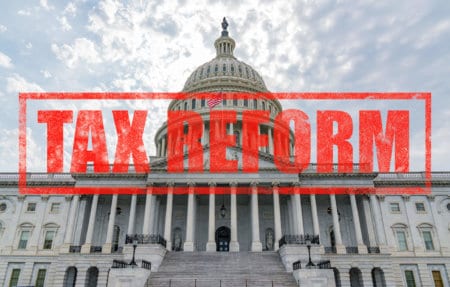Qualified Improvement Property (or QIP) has transformed into a proverbial puzzle, inside an enigma, wrapped in a conundrum. So let us start at the beginning and tell you at least some of the Qualified Improvement Property story. This blog will investigate this term in light of recent tax law changes and massive research from the experts.
Bear in mind that, at any time, Congress could pass laws to fix the purely linguistic errors made in the Tax Cuts and Jobs Act (TCJA.) By the way, our previous blog introduced some restaurant tax issues. Reading it might be excellent preparation for reading this one. Meanwhile, are the new laws, tainted with errors, fair for restaurant owners specifically, and taxpayers in general?
A Special Note about This Blog Article

Likewise, before we begin the story of the Qualified Improvements Property enigma, Gavrilov & Co would like to mention that these are multi-faceted issues. In a blog such as this one, we can only reveal some of the highlights of the puzzling matters involving taxes and Qualified Improvement Property.
The issues deeply effect quite a few of our clients since we specialize in tax assistance and planning for restaurant owners. Thus we have created this blog because we want restaurant owners to realize they are not alone when they face these issues. The tax squad at Gavrilov & Co is honestly here to bring you professional help whether your issues are complex or basic.
Qualified Improvement Property: What is It and How Does It Relate to Restaurants?
Put simply, Qualified Improvement Property includes any improvement to the property, like a restaurant, except enlargements and basic structural changes to the actual building.
To put it another way, Accounting Today stated, “QIP is nonstructural real property installed on the interior of a building after the building has been originally placed in service. This could be anything from drywall partitions to lighting systems to bathroom renovations.”
So, when a restaurant owner builds counters, furnishings, and kitchens inside an existing structure, those items are Qualified Improvement Property. Taxing such improvements should be deceptively simple. But think again, and let’s check a little history.
Let’s Look at Qualified Improvement Property Criteria under the Old System of Tax Law

The experts state, “Qualified Improvement property, as historically defined…
- was eligible for bonus depreciation.
- originally provided that the improvement must be to the interior portion of a building that is nonresidential real property…
- The owner must place the property in service after the date the associated building was first placed in service.”
- Such property (i.e., improvement) did not need to be made pursuant to a lease,
- and the building need not be a certain age.
Chapter 1–In the Good Old Days: Qualified Improvement Property and the Legendary Depreciation Bonus
Once upon a time, prior to TCJA, under Section 168(k) provisions, Qualified Improvement Property became eligible for bonus depreciation. It was a simpler time. The owner of a restaurant could recoup the cost of property improvements within a 15-year recovery period. That period of time was called a “class life.” (More about that, below…) Moreover, such property was eligible for 50 percent bonus depreciation under pre-Tax Reform Section 168(k).
Chapter 2: Congressional Oversights, Qualified Improvement Property, and the TCJA
To make a long chapter of this story short, the problems began with the best of intentions. Legislators sought to simplify some existing laws as part of the TCJA. They planned to consolidate the three types of Quality Improvement Property into one category. And they unified them all under the name, QIP.
However, they failed to endow QIP with a recovery period for recouping expenses, a class life. As we stated above, in more technical language that the recovery period is a “class life.” That is the term in which taxing makes it easier for the restaurant owner to recover financially for a designated period of time. Here’s how the experts explain it in detail:
“Bonus depreciation allows faster depreciation of assets with class lives of 20 years or less. The class life definition is important to understanding the Congressional oversight in the new law. Bonus depreciation allowed businesses to immediately deduct an increased percentage of the cost basis of qualifying property placed in service during that tax year. The bonus percentage, initially set at 50 percent, was set to drop to 40 percent in 2018, 30 percent in 2019, and expire in 2020.”
However, due to an unintentional oversight, lawmakers failed to assign “a class life” to the Qualified Improvement Property. They intended to assign the 15-year class life to it. Because of their oversights, the class life for the Qualified Improvement Property is now 39 years. This could be financially brutal for some restaurant owners. To compound the error, legislators also failed to make QIP eligible for bonus depreciation.
Chapter 3: One More Mistake and the Consequences of Congressional QIP Errors
And oversight is also the story behind the way restaurants became ineligible for the best benefits of the new tax laws: the 100 percent first-year bonus depreciation. As you can discern from its name, this law grants restaurant owners an “immediate tax write-off for new or used property. It grants a class life of 20 years or less. It is applicable to property acquired and placed in service after September 27, 2017, and before January 1, 2023.” Do you see an oversight here, too?

Therefore, some restaurants will need to figure some of their tax expenses for Qualified Improvement Property by two different standards, the old and the new.
Due to these little legislative errors, largely linguistic, restaurant owners cannot fully depreciate costs for improvements in their critical first year. Due to the new law, they must recover their expenses over the next 39 years.
In Conclusion, We hope that Congress can soon pass legislation to fix the errors that have caused these issues. But we are prepared for a continued lack of action. So, do not hesitate to seek professional help with the Gavrilov Tax Squad. Professionals can help you see if there are other ways to lessen your tax burden.

